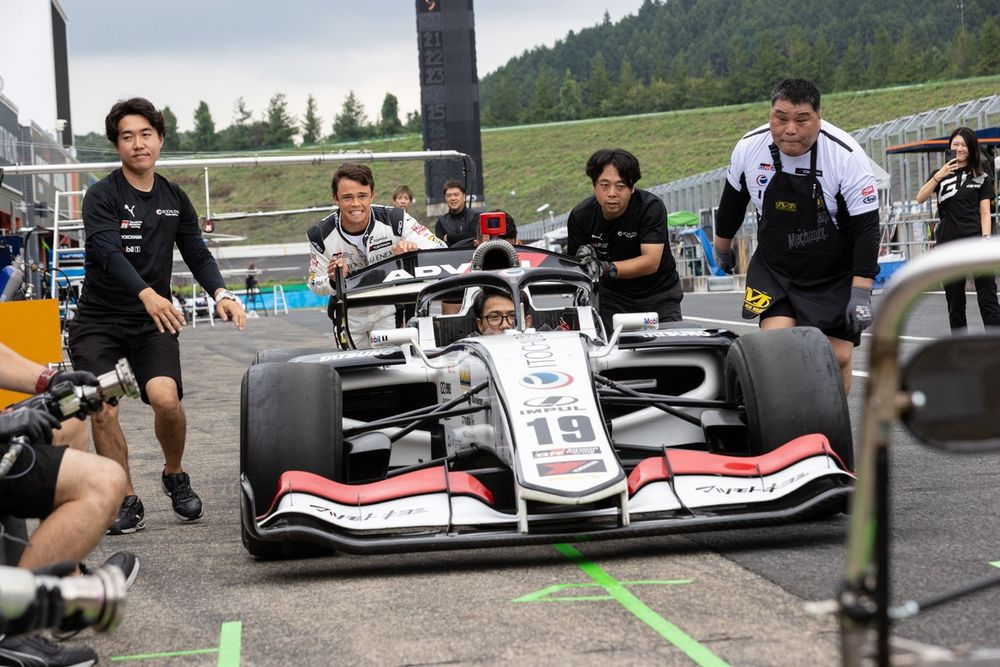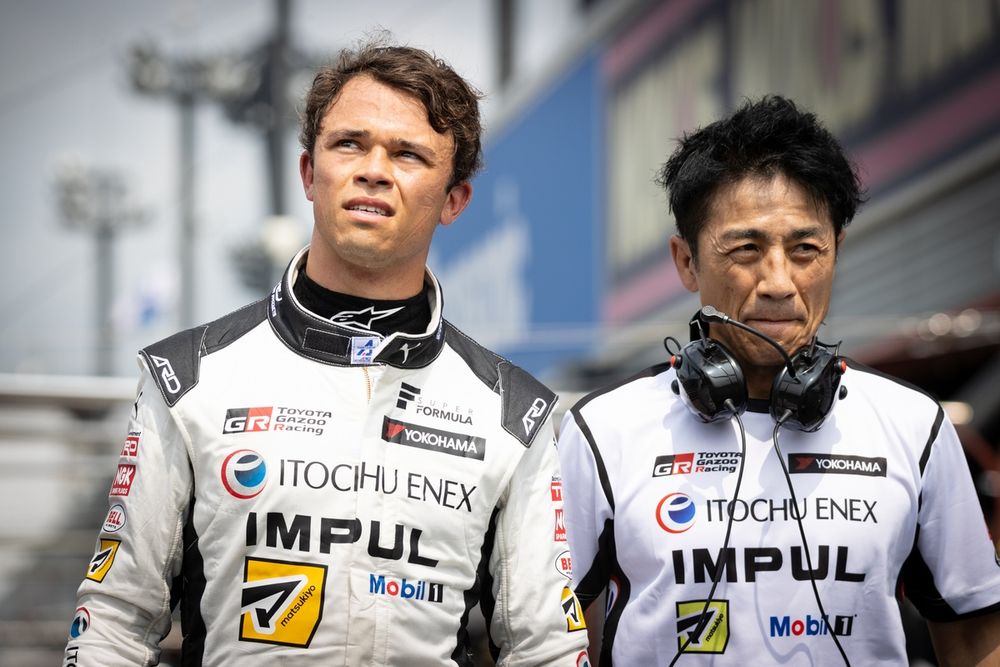For the first time since he lost his AlphaTauri Formula 1 drive halfway through 2023, Nyck de Vries was back at the wheel of a conventionally-powered single-seater last month when he made his Super Formula debut at Motegi with Toyota squad Team Impul. And while the results may have been nothing special on paper – 18th in qualifying, 13th in the race – it’s clear that de Vries impressed many people in the paddock with his approach and demeanour, while the Dutchman was in turn full of praise for the Japanese series.
De Vries became the fourth different driver of the year to fill the seat, first vacated by Theo Pourchaire after just one race. Following Ben Barnicoat’s cameo at Autopolis, Toyota junior Hibiki Taira acquitted himself well in taking over the seat for Sugo and Fuji, but the case for Toyota to put World Endurance Championship regular de Vries in the car for Motegi was impossible to fault, particularly with his Formula E commitments on hold for the off-season.
With no prior experience of the car or the track, and not even so much as a go on the simulator, de Vries was always going to be up against it. He admitted to pushing too hard in qualifying and making some mistakes, hence his lowly grid position.
Come race day, things looked a lot more promising and de Vries was arguably unlucky not to at least score a point. Impul brought him in for his mandatory tyre change on lap 17 of 37 in response to Sena Sakaguchi’s car stopping on track, which initially looked as if it could trigger a safety car but was finally covered off by double-waved yellows. That put de Vries in a strategic no man’s land: he was undercut by those who had pitted early, and was unable to take full advantage of the tyre offset afforded by a later stop.
But, from Impul’s perspective, what de Vries did off track at Motegi probably made more impact than anything he did on it. Team director Kazuki Hoshino, son of team founder and Japanese racing legend Kazuyoshi, was effusive in his praise of his new charge.
“I’m amazed,” said Hoshino. “Young drivers should learn from what he has done. Before coming to Japan, he made a list of what he can prepare in advance, and he suggested an online meeting with me and the engineers to learn more about the car, the circuit, the tyres. I realised that even those that have made it to the top don’t neglect these preparations.

De Vries mucked in with pitstop practice, impressing Hoshino
Photo by: Masahide Kamio
“I thought his seriousness was amazing. He never stopped asking questions to make sure there was nothing that he didn’t understand. During pitstop practice he was helping to push the car, and it made me think, ‘This is what a top-class driver looks like.’”
The good news for de Vries is he has another go at making an impact on track when he returns in October for a double-header at Fuji, a circuit he already knows well. And he hopes that some of the methods he has introduced to the team from his time racing in Formula 2 and other series can help it take a step forward after a difficult season so far.
“We spent a lot of time debriefing and discussing things, maybe slightly more than they are used to!” he grinned. “We can learn from each other. I do believe that in Europe there are more processes in terms of the analysis, pre, during and post-event.
“During pitstop practice he was helping to push the car, and it made me think, ‘This is what a top-class driver looks like'”
Kazuki Hoshino
“When I returned to the team [after qualifying], I said, ‘Let’s make a report tonight and go through everything – not just discuss it but actually put it down on paper and try and figure out what to improve.’ Otherwise there is not enough process behind it.”
Prior to the weekend, de Vries revealed that he had been eyeing a move to Super Formula back in 2017, when he was still a McLaren junior, before finally opting to step up to F2. Considering how Pierre Gasly did as a Red Bull protege that season, missing the crown by just half a point, who knows how a good season in Japan could have altered de Vries’s career trajectory?
The 29-year-old also explained an affinity for Japan dating back to his first visit to the country in 2009 for a kart race at Suzuka, where incidentally he faced two of his future Super Formula rivals, Nirei Fukuzumi and Ukyo Sasahara.
Looking back on his debut Super Formula weekend, de Vries highlighted the level of camaraderie and mutual respect between the drivers as something that struck him.

De Vries was struck by the camaraderie in the paddock
Photo by: Masahide Kamio
“In the drivers’ briefing there was an open discussion about the point at which you can’t overtake each other prior to your qualifying lap,” he recalled. “Impeding is never an issue here, whereas in Europe you always have people shouting at each other!
“I’m not sure anyone was called by the stewards the whole weekend. In European racing, this doesn’t happen – partly because they over-regulate, they penalise things that shouldn’t be penalised. And partly because the level of respect is not as high as it is here.”
Whether de Vries ever races full-time in Super Formula remains uncertain, but it would be a huge boost for the championship if he did. And it’s hard to think of too many other international drivers who would fit into the series more seamlessly.
Additional reporting by Kenichiro Ebii

De Vries will get another crack at Super Formula in October at Fuji – could it be the start of a more regular association?
Photo by: Masahide Kamio